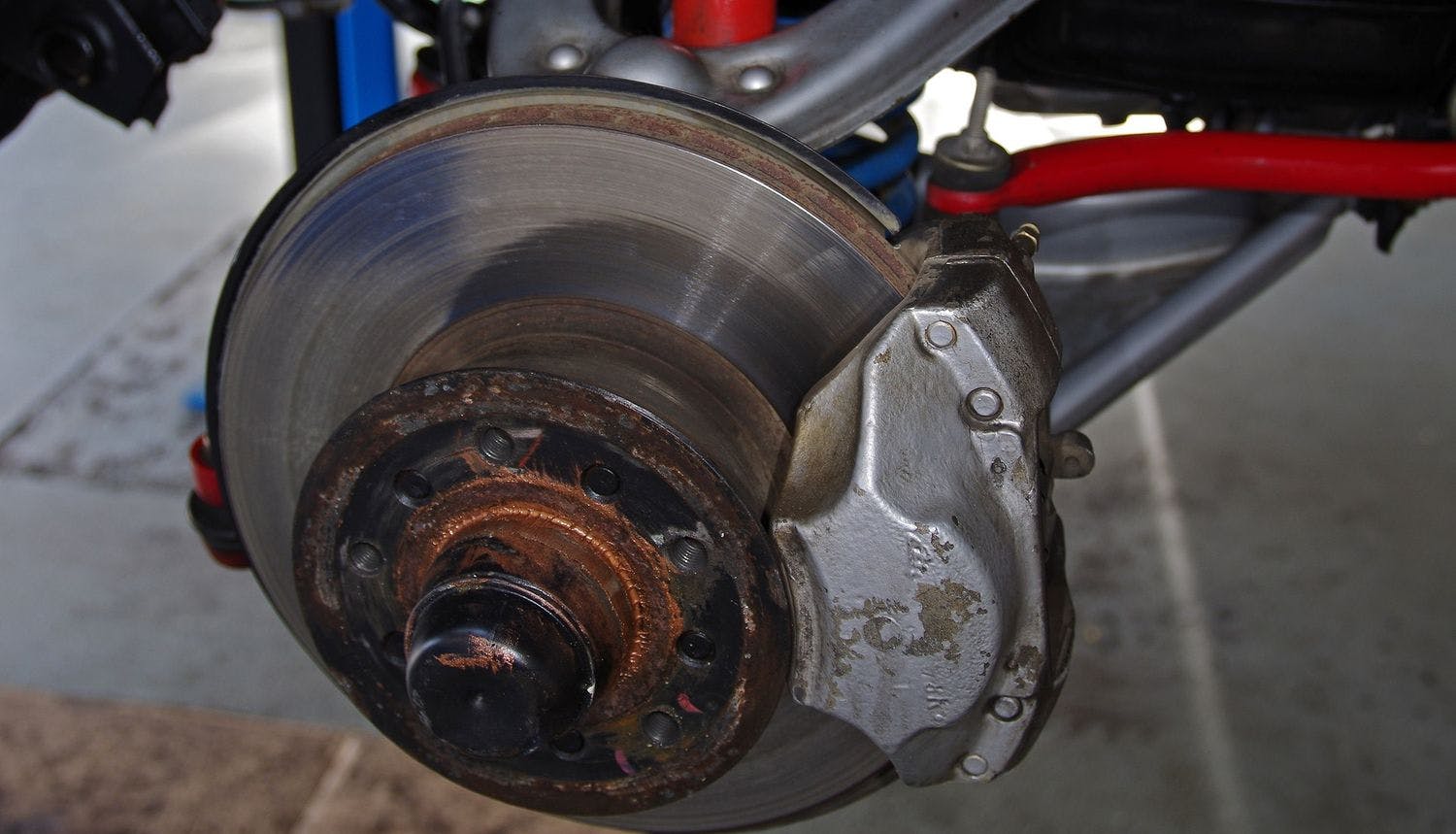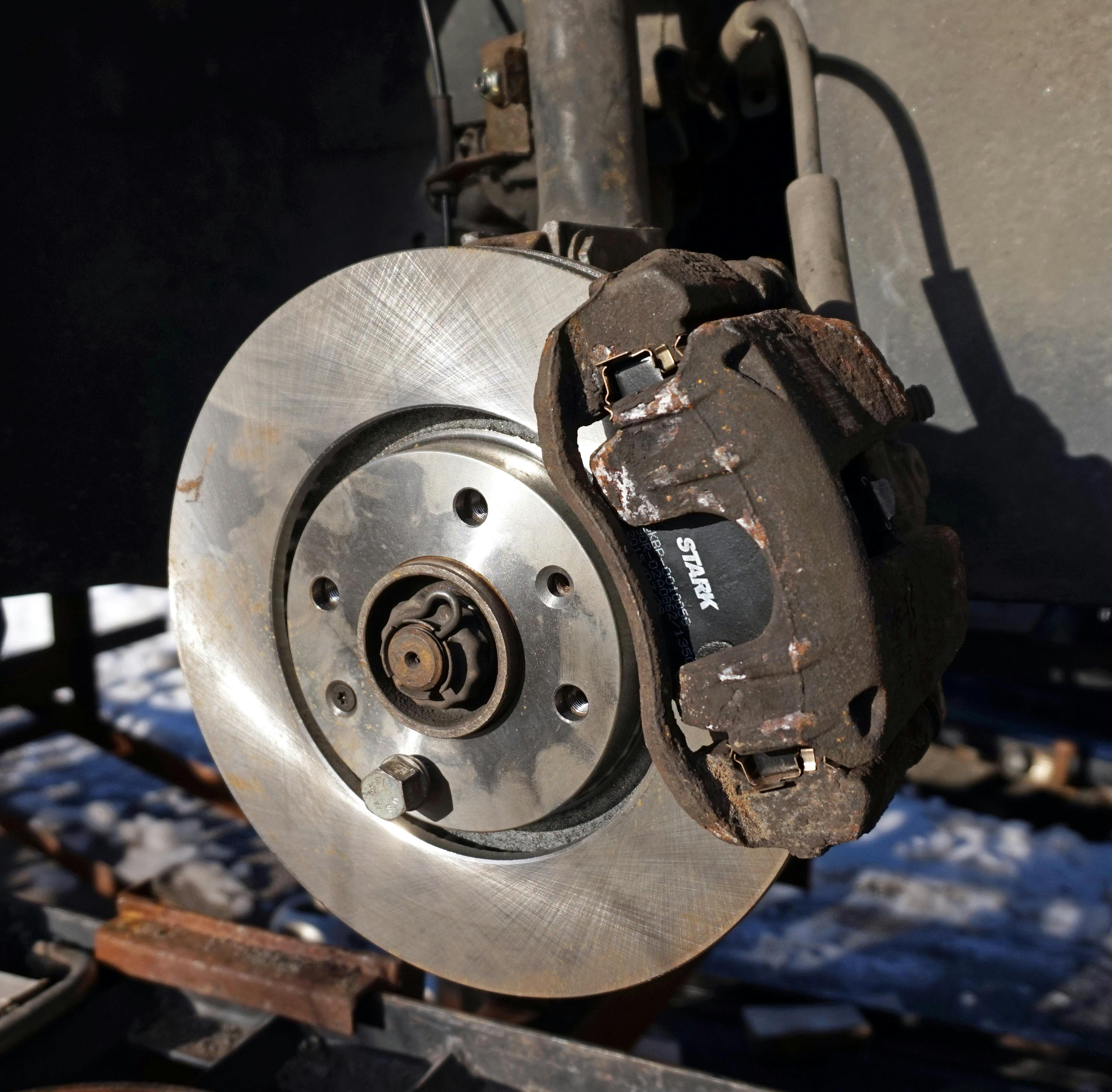Disc brakes: What are their pros and cons?

Disc brakes are mainly used in cars, but we can also find them on motorbikes or trains. The working part of the disc brake is the disc, which is braked by the pressure of the brake pads.
When the brake pedal is pressed, pressure builds up in the brake system, and brake fluid starts to push the brake piston, which presses on the brake pads. This creates friction and, thus, a braking force that stops or slows down the vehicle.
Inhaltsverzeichnis
There are two types of disc brakes:
- Fixed caliper disc brakes
- Floating caliper disc brakes
1. Fixed caliper disc brakes
In the case of a disc brake with a fixed caliper, there are rollers on both sides of the caliper in which the pistons move. When braking, the brake fluid pushes the pistons, which in turn pushes the brake discs onto the disc's surface from both sides.
2. Floating caliper disc brakes
With a disc brake with a floating caliper, the piston is located only on one side of the caliper. The piston pushes the brake disc onto the disc, which creates a reaction force on the other side of the caliper, moving the caliper, which presses the brake disc against the disc on the opposite side of the piston.
Disc brakes and their construction

Disc brakes are composed of several components, namely:
- Brake disc
- Brake caliper
- Brake piston
- Brake pads
1. Brake disc
The disc is connected to the wheel using screws and rotates with it. It is made of metal, tempered cast iron, or other materials resistant to high thermal and mechanical stress. In more expensive, sports cars, it can be ceramic.
The disc has a plate shape and can be of simple or hollow construction (discs with internal cooling). During braking, heat is generated, and the brake disc heats up. Therefore, some discs are equipped with internal cooling, a system of channels through which air passes, which helps to cool.
There are even discs in which holes are drilled to help drain water and dirt and thus improve the braking effect. Some discs have grooves created on the friction surface. These grooves allow a visual inspection of the wear condition of the discs, but also improve their self-cleaning ability and speed up the break-in of the brake pads.
The disc can have different dimensions, while it is true that the larger its diameter, the greater the braking torque.
2. Brake caliper
It is a part attached to the car and into which the brake piston, or several pistons in the case of multi-piston disc brakes, is mounted.
3. Brake piston
It is mounted in the brake caliper, and a brake fluid hose is attached. When braking, the brake fluid pushes the piston, which pushes the brake pads onto the disc. High-performance, sports cars use two, four, or more piston versions of the disc brake.
4. Brake discs

Brake pads clamp the brake disc between them and are designed to create the greatest possible friction when in contact with the brake disc. Some cars have a brake pad wear sensor that alerts the driver when they need to be replaced.

Brake Pads: How do they work, and which are the best?
Advantages of disc brakes:
- compared to drum brakes, they are simpler, more powerful, and more reliable - lower weight
- better cooling
- simple replacement
Disadvantages of disc brakes:
- higher price
- more complicated connection of the handbrake
- they are not as resistant to dirt as drum brakes
In cheaper cars, they are used only on the front axle, due to their higher price and more complicated connection to the handbrake (in cars of the middle class and higher classes, disc brakes are used on both axles of the vehicle precisely because of their higher efficiency compared to drum brakes).